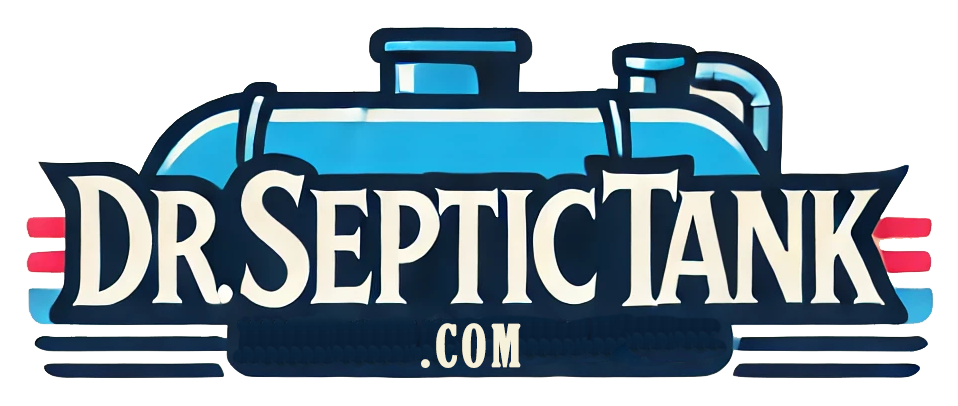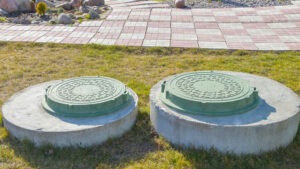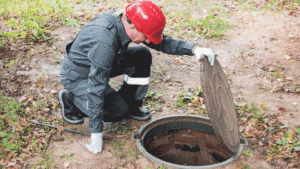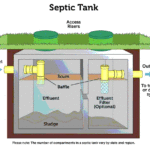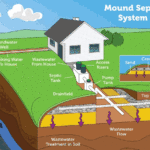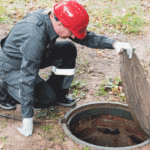A typical septic system consists of two main components: a septic tank and a drainfield (also known as a soil absorption field).
The septic tank processes organic matter and separates floatable materials like oils and grease, as well as solids, from the wastewater. In conventional soil-based systems, the liquid effluent is discharged from the septic tank into a network of perforated pipes buried in a leach field, chambers, or other specialized units. These units gradually release the effluent into the soil, which forms the drainfield.
Alternative systems employ pumps or gravity to facilitate the flow of septic tank effluent through various media such as sand, organic materials like peat and sawdust, or constructed wetlands. These media help to remove or neutralize pollutants, including pathogens, nitrogen, phosphorus, and other contaminants. Some alternative systems are designed to evaporate the wastewater or disinfect it before releasing it into the soil.
The septic tank system operates in several stages:
- Wastewater Collection:
- All wastewater from household fixtures (toilets, sinks, showers, washing machines) flows into a main drainage pipe.
- This pipe leads to the septic tank, typically buried underground near the house.
- The pipe should have a slight downward slope to allow gravity to move the waste.
- Ideally, there should be a cleanout pipe installed for maintenance access.
- Solid Separation:
- The septic tank is usually a large, rectangular or cylindrical container made of concrete, fiberglass, or polyethylene.
- As wastewater enters, it slows down, allowing heavier solids to sink to the bottom (forming sludge).
- Lighter materials like oils and grease float to the top (forming scum).
- The middle layer consists of relatively clear water (effluent).
- Baffles or tees at the tank’s inlet and outlet prevent sludge and scum from leaving the tank.
- Partial Decomposition:
- The septic tank creates an anaerobic (oxygen-free) environment.
- Anaerobic bacteria thrive in this environment and break down organic matter in the wastewater.
- This process reduces the volume of solids and prevents rapid buildup of sludge.
- Some gases (like methane and carbon dioxide) are produced as byproducts of this process.
- These gases are typically vented through the house’s plumbing vent stack.
- Effluent Disposal:
- The partially treated effluent flows out of the septic tank into the drain field (also called a leach field).
- The drain field consists of a series of perforated pipes laid in gravel-filled trenches.
- As effluent seeps out of these pipes, it’s further filtered by the soil.
- Beneficial bacteria in the soil provide additional treatment.
- The treated water eventually returns to the groundwater system.
View an animated, interactive model of how a household septic system works created by the Guadalupe-Blanco River Authority.
